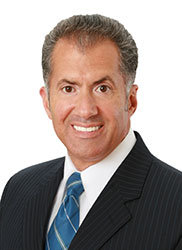Problem Solver
Referral Sales: New Rules for a Radically New Game
The nature of HME referral sales is changing. What are the tools and resources providers should incorporate into their game plans?
- By David Kopf
- Oct 11, 2022

When it comes to the post-Covid sales environment, “We’re never going to go back to the referral process that we had before,” says Ty Bello president and founder of industry sales and management coaching company Team@Work (teamatworkcoaching.com).
For many years, referral sales remained a somewhat predictable process in the HME industry. Providers knew how to communicate with, consult with, and sell to referral partners. However, several factors are now changing referral sales for HME providers, and it’s essential that they adapt.
The most immediate trend impacting referral sales: Covid-19. The public health emergency and lockdowns across healthcare forced HME providers to pivot how they interact with their referral partners, and that includes how they sell to them, says Ty Bello, president and founder of industry sales and management coaching company Team@Work (teamatworkcoaching.com).
“What we haven’t realized is, we’re not in Kansas anymore, Dorothy,” he says. “We’re never going to go back to the referral process that we had before.”
But if the circumstances surrounding referral sales have changed, so have the expectations. If the biggest payer in U.S. healthcare, Medicare, is veering away from a fee-for-service (FFS) model to outcomes-oriented reimbursement, then HME providers should naturally expect every other player — third-party payers, physicians, health systems, etc. — to follow.
Who Are You Calling a Rep?
This means that HME providers need to start running outcomes-oriented businesses that can measure outcomes for the various disease management programs they run. That will require them to supply equipment that has the capability to help them report clinical data.
For example, everyone in the industry knows how sleep therapy reimbursement is tied to clinical data that is reported by their PAP therapy devices; expect that to be the model for the management and reimbursement for disease states.
And, in an increasingly outcomes-oriented healthcare world, referral partners want to know how HME providers are going to play a role in that. This, in turn, raises the expectations for what HME sales reps can communicate and convey. In fact, maybe they shouldn’t even be called sales reps any longer.
“We have to change to be more sales professionals than representatives,” Bello says. “And what I mean by that is we need to incorporate more clinical-based selling today than we ever had in the past.
“Do you remember the tagline from [the TV show] The Six Million Man? ‘We can rebuild him,’” Bello continues. “We have to rebuild our sales representatives to be sales professionals. Providers will need to invest in training and education, and they will have to have high levels of accountability, as well.”
Investing in Sales
The key word, Bello notes, is “invest.” HME providers find themselves in a tricky spot when it comes to referral sales: The job market for good sales professionals is very competitive at the moment, and with the pressure for an HME provider’s sales team to perform, the provider needs to find a way to give them the training, education and tools that will help them thrive.
And when it comes to tools, Bello says that providers need to invest in the resources that help them better understand their local marketplace.
“Providers must have better insight into what they’re doing on a daily basis,” he explains. “They have to be able to validate the conversations that they’re having with referrals when they’re out in the field. They need more visibility into what’s going on in the referral community.
Insight & Accountability
This is why customer relationship management and market data tools have evolved into must-have resources for HME sales teams, Bello explains. And the data tools have evolved considerably, he adds. Today, services such as Trella Health (trellahealth.com) offer market intelligence solutions that let HME provider businesses see which referral sources are serving specific types of patients, to which HME providers they are referring, and how much they are referring to each provider.
Moreover, while there has been some market data available in the past, the quality of market data available to HME providers has vastly improved over the years, Bello adds.
“The data available in 2022 is 90 percent better than what it was 10 years ago, without question,” he says. “It is more reliable, it is more frequently reported, and it is being pulled from more sources than it ever has before.”
On top of market data, CRM tools let sales professionals manage their outreach to prospects in the marketplace and control how they move them through their referral sales process. They can make activity notes, update proposal progress, and consistently communicate with their clients. Similarly, management can set benchmarks, track milestones and pinpoint where sales team members might need help.
“This is where we grow team members from being a rep to being a professional because we have clear steps — by referral source — for how we’re going to grow them,” Bello explains. “That is a different approach. … It’s about the sales professional, it’s about the sales leadership, it’s about coaching and training the team, and then it’s about holding them accountable.”
About the Author
David Kopf is the Publisher HME Business, DME Pharmacy and Mobility Management magazines. He was Executive Editor of HME Business and DME Pharmacy from 2008 to 2023. Follow him on LinkedIn at linkedin.com/in/dkopf/ and on Twitter at @postacutenews.